elligence, the ChatGPT artificial intelligence chatbot, which has recently exploded in the global technology and venture capital community, can chat, create and write code at the same time. Bill Gates commented on ChatGPT, saying that the emergence of this AI technology is as historically significant as the birth of the Internet and the personal computer. Its emergence has once again set off a wave of public concern about artificial intelligence.
Recently, representatives of the U.S. Department of State and the European Commission signed an "Executive Agreement on the Use of Artificial Intelligence Technology in the Public Interest" to reach a large-scale cooperation agreement to strengthen data sharing among allies. The signing of this "administrative agreement" is an important part of the U.S. and Europe to create a technology trade circle, but ultimately it is the judgment of both sides on their strategic position in the digital ecology, as well as the future competitive landscape. Nowadays, Europe and the United States are embracing each other, and countries around the world are playing increasingly fierce games around the barriers to cross-border data circulation, data globalization, data sovereignty jurisdiction, etc. Solving international data barriers and releasing global data value has become a very challenging and realistic issue.
As a multinational company that is rapidly promoting digitalization, AIER will continue to work with the Institute of Computing Technology of the Chinese Academy of Sciences (ICTC) on development strategies in the face of these international challenges. Recently, the "AIER - Institute of Computing Technology of Chinese Academy of Sciences 2023 Strategic Planning Meeting" was successfully held in Changsha. The meeting brought together 11 researchers in the field of computing from CAS and more than 100 clinical experts from AIER Ophthalmology, focusing on the theme of summarizing the results of cooperation and speeding up the digitalization process, and deploying the rapid transformation and application of the achievements made in digital ophthalmology federal collaborative platform, eye health big data platform, ophthalmology knowledge map and intelligent diagnosis and treatment equipment research and development. It was agreed that the joint research and implementation of "global scale ophthalmology model service network", "digital intelligent ophthalmologist", "pioneering unmanned autonomous ophthalmology laboratory" and so on will be both The three major research projects are "top of the line" and "groundbreaking".
"This high-level innovation cooperation platform will continue to innovate in "algorithms" and accumulate huge digital assets in ophthalmology, while releasing powerful digital ophthalmology "computing power". "This is also a strong initiative that AIER Ophthalmology is taking in the era of digital economy, interpreting the responsibility and mission of "Let all human beings enjoy the right to eye health".
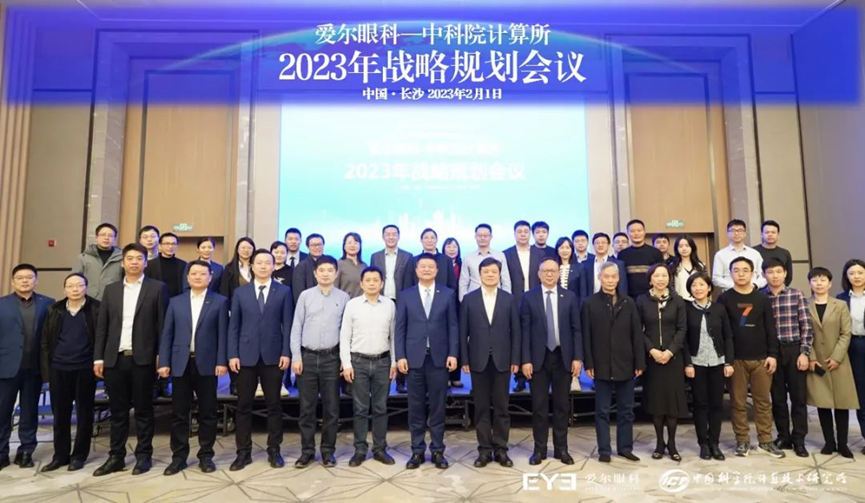
Group photo of some participating experts
Over the "small hospital wall", digital ophthalmology federal collaboration platform (FedEye) officially launched
A very common problem in the medical industry is the lack of large-scale high-quality labeled data. Because of data privacy and security issues, data from different medical institutions cannot be aggregated and shared, which greatly affects the accuracy of models and hinders the process of scientific research.
In the face of the demand for collaborative innovation in digital ophthalmology, the conference unveiled the FedEye, a collaborative platform for digital ophthalmology jointly developed by AIER Eye and the Institute of Computing, Chinese Academy of Sciences. It works similarly to the joint AI modeling adopted in the US-European AI cooperation agreement, that is, through distributed model training among multiple data sources with local data, the optimal model results can be obtained only by exchanging model parameters or intermediate results without violating data privacy protection laws and regulations, thus achieving a balance between data privacy protection and data sharing computing. Balance At present, FedEye has been officially launched, and has been approved as "Changsha New Generation Artificial Intelligence Open Innovation Platform", Hunan Provincial Expert Workstation, and Hunan Furong Laboratory (Precision Medicine) Co-Building Enterprise.


FedEye was approved as a new generation artificial intelligence open innovation platform in Changsha City and a co-builder of Furong Laboratory in Hunan Province
FedEye is a collaborative digital ophthalmology platform developed by CCAI, which can connect multi-center collaborative business and realize joint construction of large-scale intelligent models through federal mechanism. The platform is already online with 30 federation learning algorithms, which can realize model local construction as well as multiparty joint research and development. The five common eye disease auxiliary diagnosis models trained in the first phase have been tested by a third-party inspection agency, and the FedEye federal auxiliary diagnosis model has an accuracy of 94.845%, which is 9.537% higher than the local auxiliary diagnosis model on average.
The digital ophthalmology federal collaborative platform is developed for the society to further promote virtual sharing of data, rapid promotion of technology, joint innovation breakthroughs, and the popularization of high-level ophthalmic medical services with the power of artificial intelligence. With the continuous addition of fellow ophthalmologists, computing experts and industry partners, FedEye, a high-level digital autonomous innovation, will contribute wisdom and strength to achieve self-improvement and self-sufficiency in the field of ophthalmic medicine.
Based on solving the "top of the sky" yuan problem, the research results of a number of projects to support the new world of digital ophthalmology
The cooperation between AIER Ophthalmology and the Chinese Academy of Sciences is an open and innovative high-level cooperation model, which is an important initiative for AIER to gather high-quality scientific and technological forces, tap internal resources and speed up AIER's digitalization process. The "Federal Collaboration Platform for Digital Ophthalmology" is one of the first open topics in the "China-Ai Cooperation Digital Ophthalmology Joint Laboratory Project". At the same time, we also launched the projects of "Audio-visual and tactile interaction technology and application for remote ophthalmology surgery", "Research on high-precision AMD assisted diagnosis of macular deformation based on multimodal information" and "Intelligent assisted diagnosis algorithm for fungal keratitis". Research and application of diagnostic algorithm for fungal keratitis" and "Research on security protection technology of eye health big data platform based on zero trust".
These five topics, from the virtual ophthalmic surgery training touch-sensitive software and hardware facilities, basic eye disease intelligent aided diagnosis, eye health big data platform security protection and other directions of layout, is based on solving the digital process of Ireland faces many concerns in the "meta-problem", specifically to solve the high cost of training and teaching doctors, senior It was established to solve the "pain points" such as the high cost of training and teaching doctors, the lack of uniform diagnostic standards for basic eye diseases due to the shortage of doctors, and the security of EB-level massive data processing operations, and aims to empower the development of digital ophthalmology in all aspects with the help of intelligent computing technology.
Before the release of this batch of open projects, the regional key project of CAS Science and Technology Service Network Program (STS Program) jointly undertaken by both parties - "Intelligent unmanned consultation system and big data platform construction for eye health management" has made a breakthrough The project has made a breakthrough and entered a successful closing stage. The project has published 17 papers, 4 in progress, applied for 5 patents, and developed an intelligent analysis algorithm of ophthalmic images based on deep learning and an intelligent assisted diagnosis system, the first integrated AI-assisted diagnosis and treatment fundus camera, an eye health big data platform and an eye health knowledge map containing more than 20 types of diseases, symptoms and other relationships.
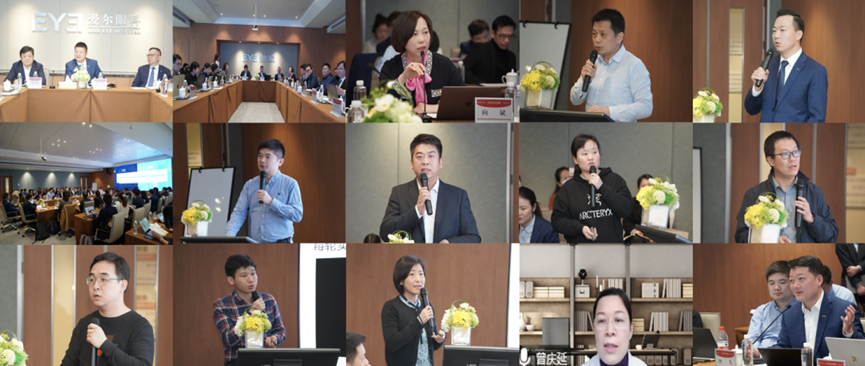
STS Project and Digital Ophthalmology Open Subject Group Workshop
With the joint efforts of the "China-Ai cooperation" team, the STS project has built an intelligent eye health management system based on an eye health big data platform: a medical cloud platform, an Internet hospital and an eye health management platform have been established, and through digitalization, the data from outside the hospital to inside the hospital and all aspects of the hospital have been connected, covering the patient's pre-consultation, during-consultation and post-consultation records. It supports the construction of an online and offline eye health "Internet+" ecosystem, and provides the basis and support for the management of youth myopia and the prevention and treatment of basic eye diseases. The youth myopia prevention and control system has been used in more than 500 medical institutions of the Group, and the service scope covers the whole country. The fundus chronic disease management system, through the integration of fully automated fundus cameras and AI-aided diagnosis technology, has been used in 77 institutions of the Group, serving a large number of patients with eye diseases. Digital technology has helped to achieve more efficient and accurate disease diagnosis and management, benefiting eye disease patients and improving the overall eye health of the whole population. Recently, the "Aier Intelligent Fundus Screening Software and Hardware Integration Solution for Chronic Eye Diseases" was successfully selected by the Chronic Disease Center of the China Center for Disease Control and Prevention and the China Academy of Information and Communication Research for the catalog of typical digital products (services) for chronic disease prevention and treatment (2022).

Chairman Chen Bang addressed the conference
Chen Bang, chairman of AIER Hospital Group, mentioned at the meeting that digital ophthalmology is a strong driver to help achieve the strategic goals of AIER, and the strong collaboration between AIER and CAS has aggregated the cutting-edge technology resources of intelligent computing and digital ophthalmology, and built an open and innovative digital platform, which is conducive to contributing new increments to the high-quality development of Hunan's digital economy, and providing strong support for the digital economy to become stronger and bigger. It will provide strong support for the digital economy and achieve "win-win" for all parties. The research results of medical-industrial crossover will greatly contribute to the realization of the three strategic goals of strengthening the grassroots level, making the height and promoting integration.
Currently, trade protectionism in the international community is spreading to the field of data, and many countries have established barriers to the cross-border flow of data, while AIER Ophthalmology, as a global ophthalmic medical group, will always maintain an open mind, promote the deep integration of intelligent technology and ophthalmic clinical care, realize the safe application of ophthalmic clinical medical data under the support of the federal collaborative platform, and promote the rapid development of digital ophthalmology in the road of science! rapid development on the road!
Casting "long guns", speed up the layout of digital ophthalmology "three major attack plans"
At the meeting, the Director of the Institute of Computing Technology of the Chinese Academy of Sciences, the Director of the Ubiquitous Computing Systems Research Center, and the Academic Director of the AIER Institute of Digital Ophthalmology pointed out the core pain points of the current development of digital ophthalmology and the international competition faced in the report "Strategic Planning and Annual Plan for Digital Ophthalmology in China-Ai Cooperation", and proposed In the report, the academic director of CCAI pointed out the core pain points and international competition facing the development of digital ophthalmology, and proposed the way to break the situation of "both the top and the ground, and win-win".
Chen Yiqiang said, relying on the international advantages of Aier Ophthalmology, we must accelerate the layout of international cooperation projects to support the exploration of more innovative models, AIER Digital Eye Institute will layout three major attack plans.
Build a "global scale ophthalmic model service network" - relying on the FedEye ophthalmic medical aid federal open platform and AIER Ophthalmology "1 + 8 + N" of world-class, national The ophthalmology model service network will cover a wide range of diseases, a wide geographic area and a large population, so that everyone can enjoy the right to eye health.
Create "digital intelligent ophthalmologist" - In the context of insufficient medical resources and scarce ophthalmologists, the emergence of digital intelligent ophthalmologist will largely alleviate the lack of ophthalmic medical resources. The plan will fully utilize the large volume of clinical cases, knowledge and experience accumulated by a large team of ophthalmologists in AIER, and draw on the technology of the Chinese Academy of Sciences team in successfully developing the Winter Olympics digital human, integrating the latest artificial intelligence + digital ophthalmology combination. The STS project's self-developed "Eye Health Knowledge Atlas" will make a great contribution to the creation of digital intelligent ophthalmologists in terms of ophthalmic medical knowledge, clinical experience and disease diagnosis.
Building a "groundbreaking unmanned autonomous ophthalmology laboratory" - The ophthalmology laboratory is driven by real-life experimental needs as it moves toward an era of intelligence. The unmanned autonomous ophthalmology laboratory will not only improve the speed of ophthalmology research, shorten the cycle of ophthalmology research, but also reduce the errors that may be caused by manual testing, generate more cutting-edge scientific research results, and lead the development of ophthalmology.
These three major digital ophthalmology research programs are not just pavilions in the air, they are both sky-high and ground-high, and can be described as "long guns" aiming at the future and "short guns" focusing on the needs, and actually supporting the ophthalmology business and work on the ground. The "Global Scale Ophthalmology Model Service Network" is already advancing step by step, and we believe that the future emergence of digital ophthalmologists and unmanned autonomous ophthalmology labs, with "long guns" and "short cannons" firing together, will create a new chapter of digital ophthalmology for us.
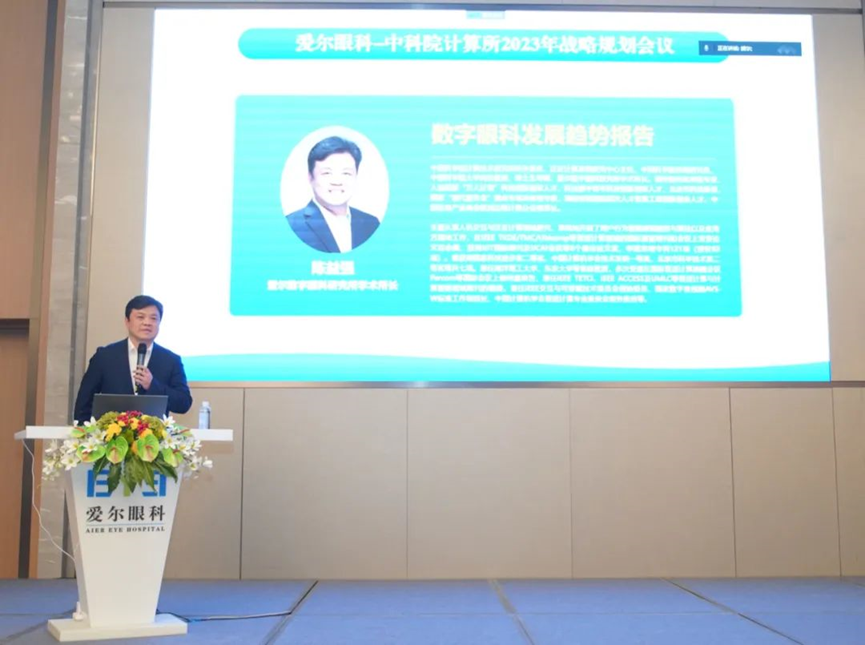
Researcher Yiqiang Chen gave a presentation on "Trends in Digital Ophthalmology".
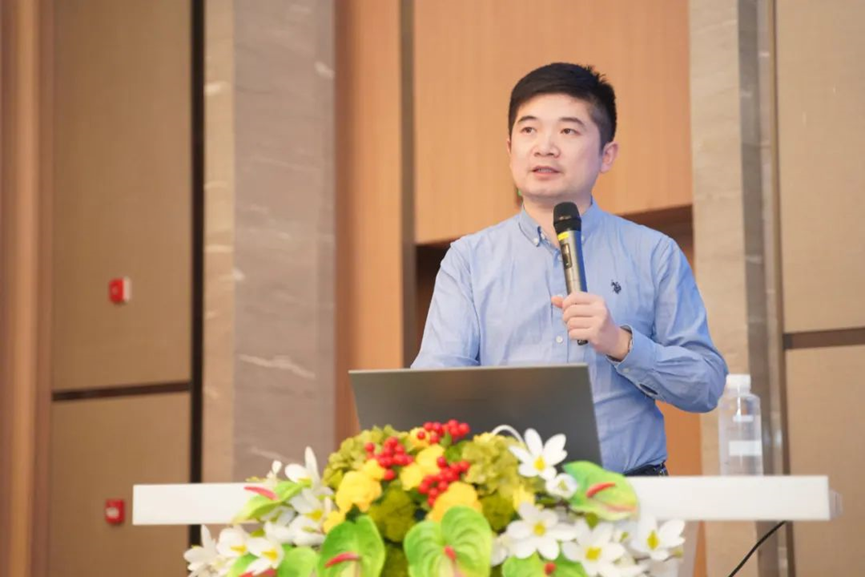
Gao Lin, Vice President of Academic Affairs, Aier Institute of Digital Ophthalmology, gave an academic presentation
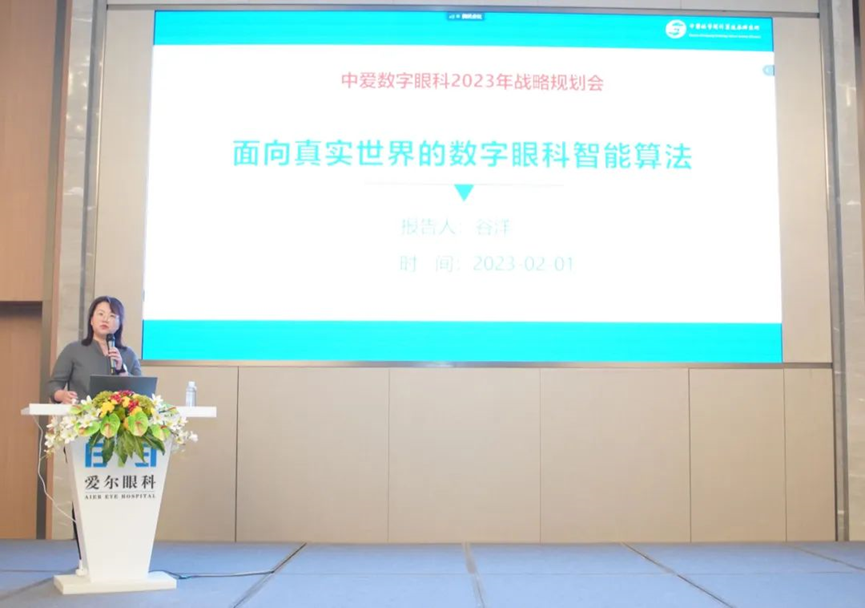
Gu Yang, Vice President of Academic Affairs, Aier Institute of Digital Ophthalmology, gave an academic report
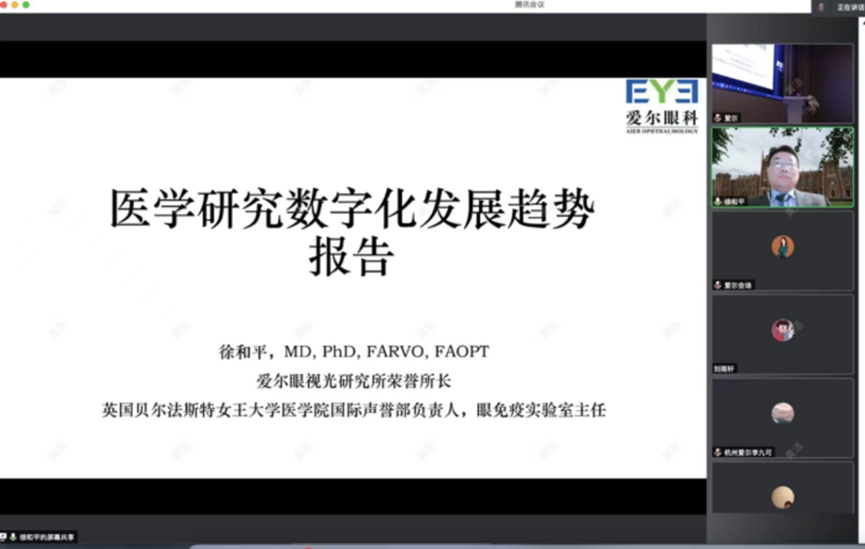
Professor Xu Heping, Distinguished Researcher of Alcor Digital Eye Institute, gave an academic report
Li Li, Global President of AIER Hospital Group, summarized the conference and once again thanked the project team for their hard work and collaborative efforts. "With the joint efforts of AIER and the Institute of Computing of the Chinese Academy of Sciences, the 'China-Ai Cooperation' project has not only achieved remarkable results in three areas: smart ophthalmic devices, smart ophthalmologists and smart patient services, but also jointly cultivated interdisciplinary composite high-end talents and made efforts to promote the transformation and application of scientific and technological achievements for digital ophthalmology." In 2023, AIER will continue to join hands with the Institute of Computing of the Chinese Academy of Sciences to start a new chapter and create a new model of innovative cooperation between industry leaders and the national scientific and technological strategic forces of the Chinese Academy of Sciences. At the same time, AIER Ophthalmology will continue to increase cooperation with top research institutions and universities, bring together top platforms and high-end talents, strive to further enhance the construction and application of medical, educational, research, production and investment systems, give full play to the advantages of resources and technology, and contribute wisdom to the cause of light in China and the world!
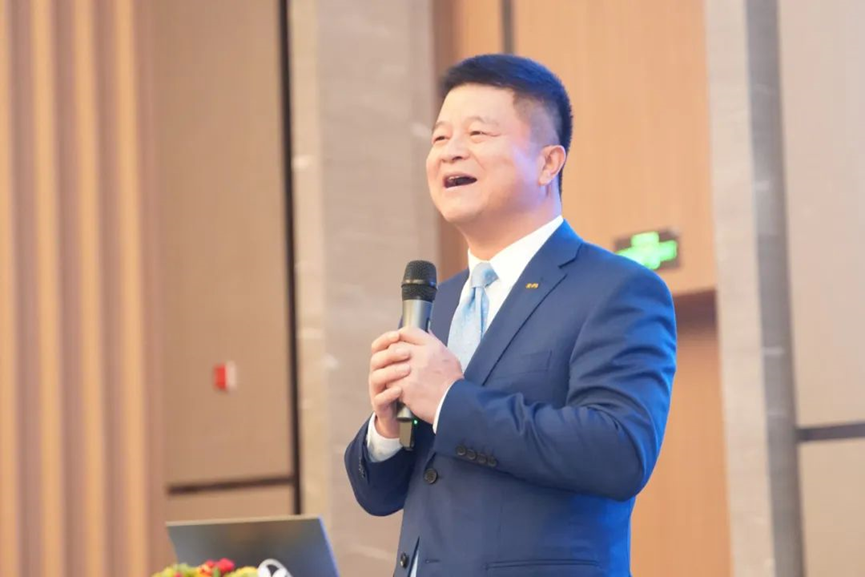
Speech by Li Li, President of Alcor Global AIER

Speech by Prof. Yang Zhikuan, Vice President of AIER
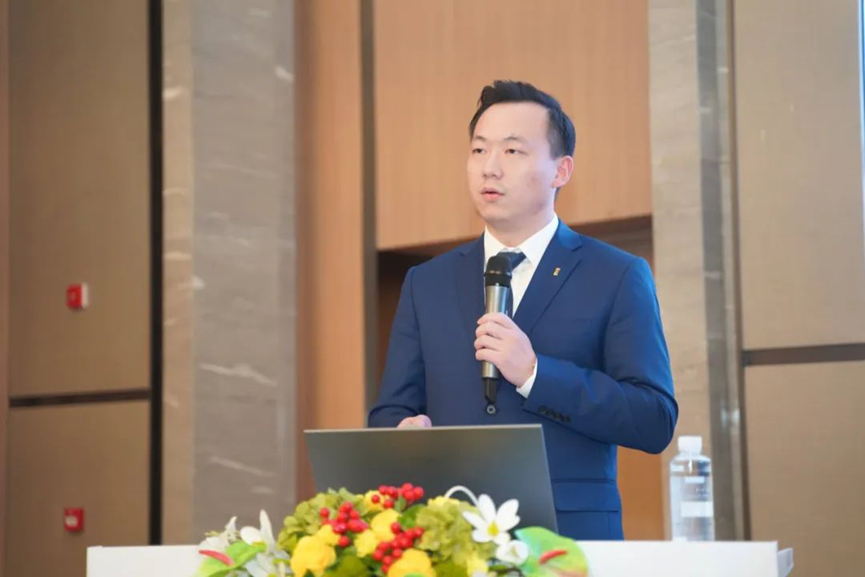
Dr. Weiwei Dai, Executive Vice President of the AIER Digital Eye Institute, introduces the project results
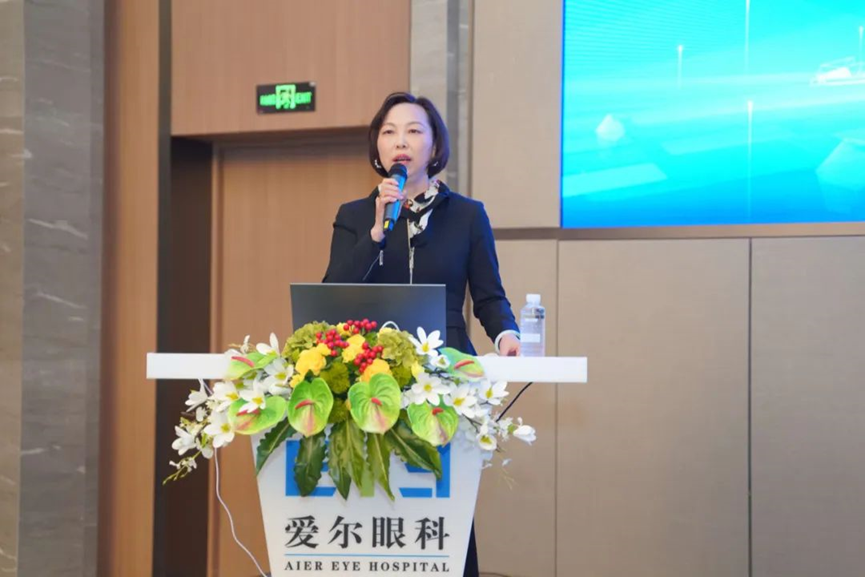
Address by Xiang Bin, Director of Education and Technology Management Center of AIER

CAS Institute of Computing Strategic Planning Meeting Site
